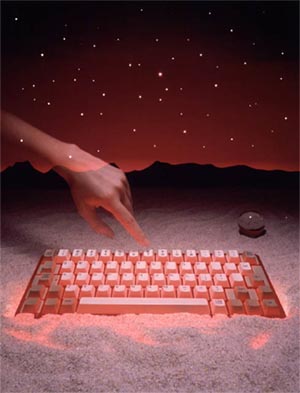|
 |
| Teachers.Net Gazette Vol.5 No.9 | September 2008 |
Subscribe for free home delivery |
|
Virtual lab Where a lack of resources rules out well-equipped laboratories, virtual labs can fill the void, providing opportunities for student experimentation that otherwise would not exist. | |||
| by Panamalai R. Guruprasad Regular contributor to the Gazette September 1, 2008
This article is the author's redrafted version of one originally published in Educators' ezine, |
|||
|
“Across the world there is a passionate love affair between children and computers. And more than wanting [computer technology], they seem to know that in a deep way it already belongs to them. They know they can master it more easily and more naturally than their parents. They know they are the computer generation.” Most high school science curricula place emphasis on not only how deeply students learn science concepts but also how effectively they can perform science experiments. In many rural schools, particularly in the third world, laboratories don’t exist; although there are labs in urban schools, they don’t offer opportunities for individualized learning due to large pupil intakes, quantity oriented curriculum, time constraints etc. Is there a viable solution? This article attempts to answer the question.  Virtual labs are useful in many ways, particularly when teaching abstract concepts (such as earth’s magnetic field, kinetic theory of matter, electromagnetic induction, photosynthesis, pollination etc) that need deeper insight. Whenever a student has a problem in understanding a particular part of the material, he can freeze or replay the animation and to get better understanding. The interactive element in such learning management systems can offer instant support in assessing students’ understanding of lesson concepts (on which the interactive experiments are designed). Sometimes, virtual feedback in LMS is preferable to real teacher feedback as the former is free from any bias. Virtual lab sessions, conducted under the guidance of well-trained teachers, enable students to move on to real time experiments in a more effective manner than otherwise. Virtual experiments have enabled effective learning in biology without using live animals. Some state government departments of education in the US have begun offering courses in virtual dissection as a viable alternative to traditional dissection of dead animals in school labs.
With numerous virtual lab products and websites, it is of paramount importance for us as educators, to preview and assess the material before using it in the classroom. Growing numbers of universities release K-12 virtual labs that can be accessible online. Some of the best resources are contained in www.virlab.virginia.edu, www.explorelearning.com and www.sciencemag.org. Although virtual experiments are useful to some extent, they should only be used as additional teaching resource and never as a replacement to activity based real experiments, unless the latter is involves issues of ethics such as animal dissection. Otherwise, we will be leading students in the wrong direction. [As a physics teacher, I have always found the utility value of virtual labs greater when integrated with other methods of teaching, than when using them in isolation]. As in all other areas of science education, how best a teacher uses virtual lab in the classroom is a matter of empathy, passion, commitment and a clear understanding of curricular aims and objectives, all this without losing grip on ground realities related to how children learn, particularly at this moment, when we have just “peeped” into “largely un-chartered” waters! A recent report released by the U.S. Department of Education1, in July 2008, can certainly throw some light on how effectively we can navigate in the waters.
“While reading about science, using computer simulations, and observing teacher demonstrations may be valuable, they are not a substitute for laboratory investigations by students”. - National Research Council (NRC). 2006. America’s lab report: Investigations in high school science. Washington, DC: National Academy Press, p.3.
Reference: http://www.ed.gov/admins/lead/academic/evalonline/index.html | |||
|


 Panamalai R Guruprasad works as Technical Advisor at the Inspectorate of Education attached to the Ministry of Education, Youth and Sports, Phnom Penh, Cambodia. His key professional responsibilities include developing and monitoring K-Grade 6 School Self Assessment Programs at the Central level.
He has served as teacher, principal and Education Officer in school systems in India, South Asia and Africa. He has also worked in Macmillan India Limited (an associate company of Macmillan UK), and Chandamama India Limited (the oldest kids magazine in India).
Panamalai R Guruprasad works as Technical Advisor at the Inspectorate of Education attached to the Ministry of Education, Youth and Sports, Phnom Penh, Cambodia. His key professional responsibilities include developing and monitoring K-Grade 6 School Self Assessment Programs at the Central level.
He has served as teacher, principal and Education Officer in school systems in India, South Asia and Africa. He has also worked in Macmillan India Limited (an associate company of Macmillan UK), and Chandamama India Limited (the oldest kids magazine in India).